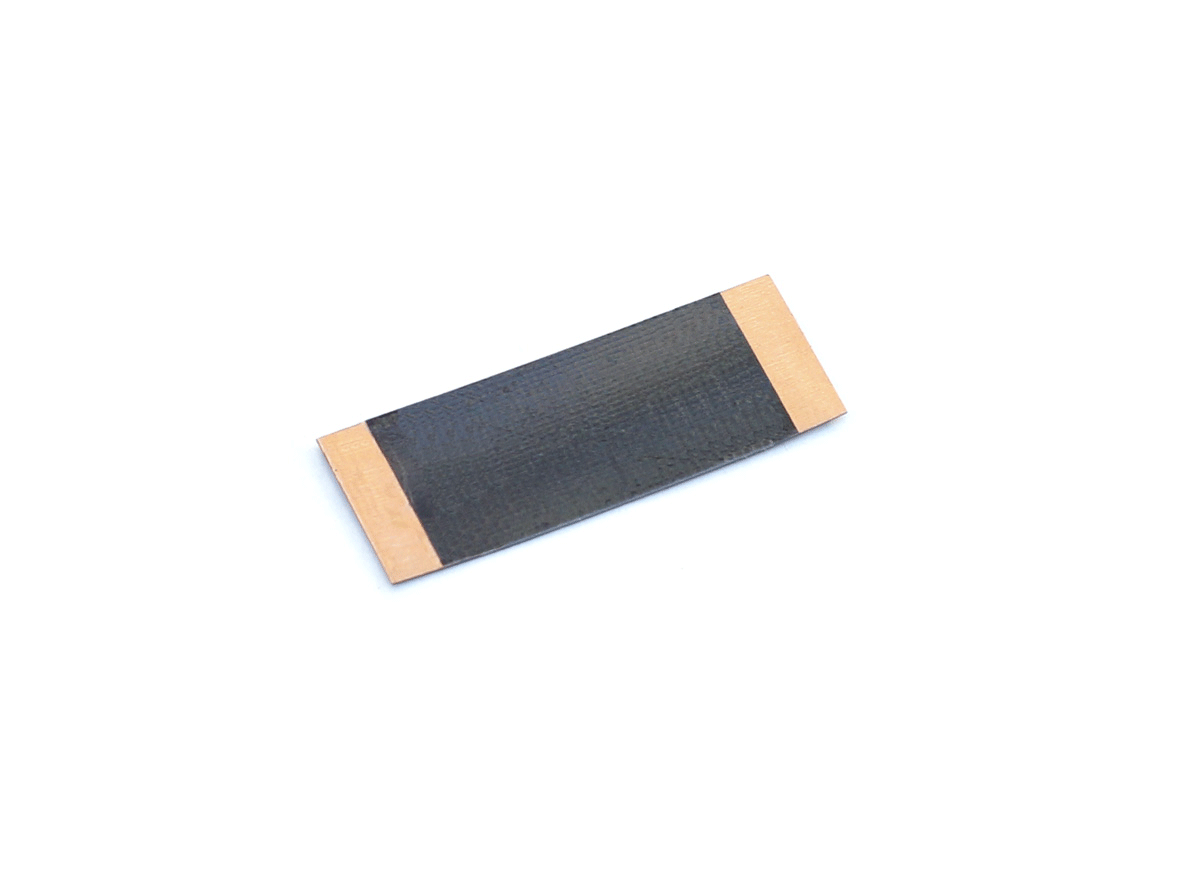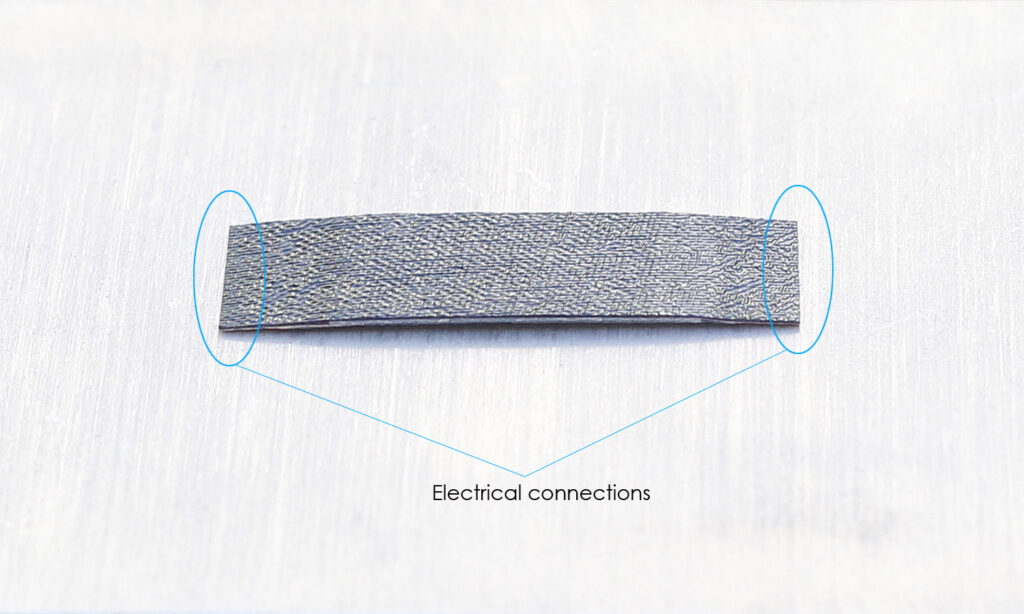
Technology
Redefining tactile encounters
Dragonfly Haptic is set to revolutionize your tactile experiences. Dragonfly Haptic combines thin and powerful construction with unrivaled reliability and a wide range of operating frequency. Customization takes center stage, offering tailored experiences to match individual preferences. Brace yourself for an awe-inspiring journey as Dragonfly Haptic unlocks a world of immersive and customizable haptic feedback, captivating your senses like never before.
How it works
Piezo haptic engine in action
Dragonfly Haptic is designed to work in 100-300 Hz range. This allows for powerful haptic feedback while maximizing efficiency. Dragonfly haptic comes with pre-applied double-sided tape for convenient installation.
Models
Dragonfly Haptic Curve
The Dragonfly Haptic Curve is a cost-effective haptic engine tailored for trackpad and wearable applications. Featuring electrodes at both ends, it facilitates electrical connections through traditional soldering or direct placement onto a PCB. Thanks to its curved design, the engine’s electrodes seamlessly align with the mating electrodes (copper pads) on the PCB, eliminating the necessity for flexible printed circuits (FPC) or soldering. This simplifies the electrical integration process significantly (patent pending).


Advantages
Unleash the power of haptic technology
Dragonfly Haptic offers a myriad of advantages that set it apart as a leading piezo haptic engine
Powerful
Designed to operate at a wide range of frequencies, including resonance, allowing it to generate unparalleled G level.
Efficient
3x more efficient than LRA and ERM thanks to high electro-mechanical energy conversion ratio of piezo
Bandwidth
As wide as 100-300 Hz. The bandwidth can also be conveniently customized.
Fast start-up
As a piezo transducer, Dragonfly Haptic start-up time is as low as 15ms, 2-3x faster than LRA and ERM.
Low noise
Unlike the LRA and ERM, Dragonfly does not generate audible or rattling noise, as it does not have a rotating mass.
Integration
Versatile mechanical and electrical integration choices, including the option to directly place it onto a PCB for seamless electrical connectivity.
Customization
Limitless possibilities
From size specifications to haptic power requirements, we offer seamless and convenient customization to ensure Dragonfly Haptic perfectly aligns with your unique needs.

Applications
Enhancing user experiences
Explore the diverse applications where Dragonfly Haptic is making a profound impact.

Automotive
Dragonfly elevates the driving experience with tactile feedback in touchscreens, steering wheels, and control panels, improving user engagement and safety.

Consumer
Adds tactile responses to smartphones, tablets, trackpad and touch sensitive devices, enriching user experiences through customizable haptic feedback.

Others
Including gaming, virtual reality, robotics, wearable, industrial control, accessibility solutions, home automation, simulation, education and research
FAQ
Question & Answer
Typically, a single Dragonfly unit suffices for most applications. The quantity required is contingent upon factors such as panel size and design, desired intensity of haptic feedback, and application-specific requirements. It also depends on whether you want to achieve local or uniform haptic feedback on your entire panel. Generally, more units are needed to have a more uniform haptic feedback. A thorough modal analysis and instrumented tests are typically conducted to determine the optimal configuration for your application. Feel free to reach out to our engineers for technical support!
The control of haptic intensity in a system depends on the specific technology and components used. When working with Dragonfly Haptic, the following methods can be employed to regulate haptic intensity (G-force):
Voltage Amplitude: Adjusting the voltage amplitude applied to the Dragonfly units can directly impact the haptic intensity. Higher voltages result in stronger vibrations.
Waveform Selection: Different waveforms can be utilized to control the haptic intensity. For example, a square or triangle waveform generates a more intense feedback compared to a sine waveform.
- Signal Processing: By manipulating the input signal through signal processing techniques, such as filtering or amplification, the haptic intensity can be finely adjusted to meet specific requirements.
It’s recommended to perform thorough testing to ensure accurate and effective control of haptic intensity.
Regular piezo haptic engines have several limitations, such as being sensitive to temperature and humidity, requiring careful design considerations for mechanical resonance, and potentially producing audible noise during operation. However, with Dragonfly these limitations are mitigated through our engineering and design techniques. Visit our Home page to learn more!
Dragonfly Haptic shares the same working principle as Dragonfly Audio, allowing it to generate sound when attached to a panel. However, the key distinction lies in Dragonfly Haptic being optimized for haptic performance, often resulting in a different resonance frequency. Nonetheless, we offer the flexibility to optimize Dragonfly for both haptic and speaker performance based on specific requirements.
Under typical operating frequencies for haptic applications (100-300 Hz), the Dragonfly itself remains noise-free. While the panel may produce subtle hum sounds, they are generally inconspicuous. Nevertheless, certain switching mode piezo drivers may incorporate a high-frequency component in their signal, potentially causing discernible high-pitched noise in the Dragonfly. Fortunately, this issue can be addressed by adding a resistor to the Dragonfly in series to filter out the high-frequency component. The resistor’s value in the RC circuit should be calculated to eliminate all frequencies above 1 kHz or so.
There is a range of commercially available integrated circuits (ICs) designed specifically for haptic applications. Here are several options for your reference:
- Boreas: https://www.boreas.ca/collections/piezo-haptic-drivers
- TI: https://www.ti.com/motor-drivers/actuator-drivers/piezo-drivers/overview.html
- Aito: https://aito-touch.com/technology/
Yes, it is. Achieving optimal haptic performance relies on various factors, including driving frequency and the modal behavior of your panel, influenced by its construction and boundary conditions. To determine the ideal installation location for your specific application, conducting instrumented tests becomes crucial.
Yes, if you’re interested in exploring the Dragonfly piezo haptic engines for your project, please contact us at contact@flora.tech!
Want to discuss how we can help?
Reach out to our engineers at contact@flora.tech


